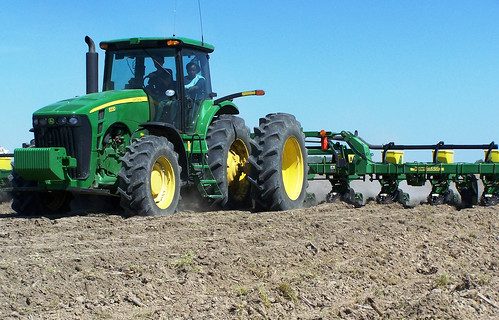After heavy rains pass, crop progress nearly on par with five-year average
Fast Facts:
-
- Five major crops now nearly caught up with five-year average in state
- Growers working overtime to take advantage of available planting window
- Agronomists urge growers to plant variety of cultivars
By Ryan McGeeney
(300 words)
LITTLE ROCK — After weeks of lagging well behind the state’s five-year average in planting progress, Arkansas growers have finally pulled within a few percentage points of historic averages, according to a crop progress and condition report published Monday by the U.S. Department of Agriculture.

According to the report, planted corn, cotton, rice, sorghum and soybeans are each within 1 to 5 percent of their respective five-year averages for progress as of May 3, with all five crops surpassing the progress made by this time last year.
Heavy rains throughout the state, especially in the northeast, delayed planting, especially affecting crops such as rice — two-thirds of which is typically planted in the northern half of the state.
Jarrod Hardke, extension rice agronomist for the University of Arkansas System Division of Agriculture, said growers around the state are now working overtime to get crops planted.
“Their hours are only limited by what their people can handle,” Hardke said. “To see tractors run after dark is not uncommon.”
Hardke said many growers were now faced with the irony of having waited out long weeks of heavy rains only to struggle with a narrow window of time before farmland — particularly that earmarked for rice — becomes too dry to plant or create levees.
“We’ve very quickly turned that corner from ‘so wet we can’t get in’ to ‘so dry we have to inject moisture to get a stand up,’” he said. “It’s like the old adage: you’re never more than two weeks away from a drought.”
Hardke said he and other agronomists with the Division of Agriculture were encouraging growers to plant a variety of cultivars and maturities in order to avoid having “large blocks of the same things all coming ready for harvest at the same time,” which could lead to issues with timely harvest resulting in yield and quality losses.
The Arkansas Cooperative Extension Service is an equal opportunity institution. If you require a reasonable accommodation to participate or need materials in another format, please contact your County Extension office (or other appropriate office) as soon as possible. Dial 711 for Arkansas Relay.
Pursuant to 7 CFR § 15.3, the University of Arkansas System Division of Agriculture offers all its Extension and Research programs and services (including employment) without regard to race, color, sex, national origin, religion, age, disability, marital or veteran status, genetic information, sexual preference, pregnancy or any other legally protected status, and is an equal opportunity institution.
# # #
Media Contact: Ryan McGeeney
Content Specialist
Cooperative Extension Service
(501) 671-2120
rmcgeeney@uada.edu
Related Links